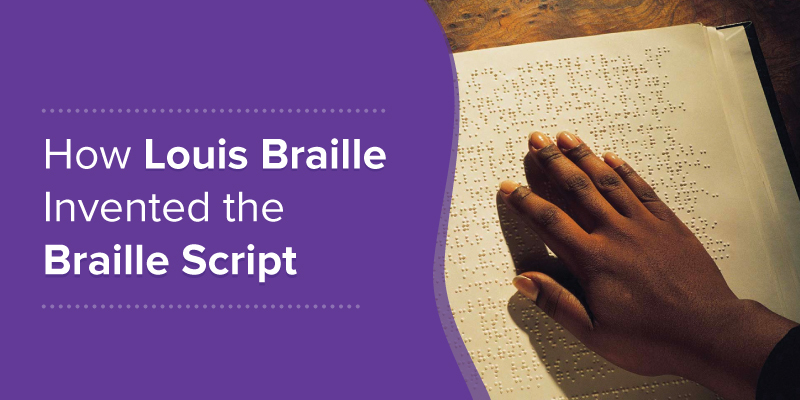
Imagine if you couldn’t read any of your favourite books and you had to rely on others to understand any kind of non-verbal communication. People who are visually impaired or blind don’t have easy access to written communication that so many of us take for granted. This is where braille comes in.
The script, made up of dots in various sequences, has opened the world up for people with visual and auditory impairment and has made so much communication possible. It was invented by Charles Barbier and perfected by Louis Braille, who was born on 4 January 1809, which is why we celebrate the day as World Braille Day.
But how did braille come out to be? Let’s take a look at the history behind it.
Wartime origins
In the early 1800s, Charles Barbier worked as part of Napoleon Bonaparte’s military services. The French military leader demanded a secret, non-verbal mode of communication for his troops to be able to use in the dark, without speaking. The reason behind the demand was that many troops would be caught or killed in battle as they would need light to communicate at night, which would tip off the enemy side.
Barbier came up with a system using 12 dots embossed on paper, which would be arranged in different sequences to make up 36 phonetic sounds from the French language. These dots, or ‘Night Writing’ as it was called, could be felt with one’s fingertips and translated into words.
However, this system proved too difficult for soldiers to use on the battlefield and was scrapped.
Enter Louis Braille
Just because it failed to take off with the military, Barbier didn’t lose hope. He knew his night writing could be helpful for the blind to communicate and in other coding avenues. In 1821, he visited the Royal Institute for Blind Children in Paris, France, a first of its kind school for people with visual impairments. There, he presented his system and his writings on it.
Eleven-year-old Louis Braille, a student of the school who had lost his vision at a very young age, took an interest in these writings and identified three major defects in Barbier’s system. Braille reduced the 12-dot system to a simple six-dot system, where each letter in the alphabet was assigned a specific combination of dots. This meant that a finger could feel a letter or two together, instead of deciphering a string of dots that made up the sound of a word. It also included symbols for punctuation marks and numbers. And, more importantly, it did not rely on a phonetic alphabet, which was a major drawback in Barbier’s system, as not everyone pronounced words the same way.
In just a few years, by 1829, Braille had perfected a system for people with visual impairment to read and communicate easily.
The script is written using a device called a slate, which looks like a stapler. A sheet of paper is passed between the two metal plates, which contain cells with different dot combinations. The paper is pressed using a stylus (much like the one you get with a tablet or a smartphone). There are also machines that produce the script for projects on a larger scale.
Braille’s legacy
While Braille’s system was almost immediately adopted by his fellow students and teachers, it wasn’t officially recognized until after his death in 1852. The Paris school, where he developed the script, adopted the script only in 1854 and it was only in 1932 that a universal braille code for the English language was adopted in the US and UK and was later modified in 1957. Today, over 133 languages have braille codes.
Braille’s script didn’t just open up the world for the blind. It also helped many other communication systems. The braille code (the basic formula for the braille script) is used to make symbols in advanced mathematical and engineering. It has also been used to invent a musical code that can help people with visual impairments to read music and also shorthand, a system used to speed write using symbols and abbreviations.
Normal people can dream when they fall asleep but what about the visually impaired? Do blind people dream?
Did you enjoy reading this? Check out more interesting reads on The Learning Tree Blog:
Sleeping on it: 5 Discoveries and Inventions Made in Dreams
Madhavi is passionate about everything to do with books, art, literature, films, trivia and food. A former journalist, she believes that asking questions makes life interesting.